Characteristics of Coffee Bean Flavor in three Coffee producing areas in the World

Professional coffee knowledge exchange more coffee bean information please follow the coffee workshop (Wechat official account cafe_style)
With the development of the boutique coffee industry, coffee fans now have access to countless individual coffees. There are more than 200 kinds of individual coffee beans from different manors in Qianjie Coffee Line alone. This also makes many coffee fans who are new to coffee do not know how to choose. In fact, coffee beans can be divided into three coffee producing areas, each of which has its own flavor, so the next article Qianjie Coffee will introduce the characteristics of the world's three major coffee producing areas.
Distribution of the three largest coffee producing areas in the world
The three major coffee producing areas mainly refer to Africa, Asia and Latin America. For example, the coffee flavor in Africa is sour. For example, the Ethiopian Yega Sherfield coffee bean in the front street coffee shop is famous for its unique citrus citric acid. The coffee flavor in Asia is famous for its unique herbal flavor and mellow taste. For example, Indonesia Mantenin Coffee is the representative of Africa. The main flavor of coffee beans in Latin America is nuts and cocoa, and the overall flavor is more balanced.
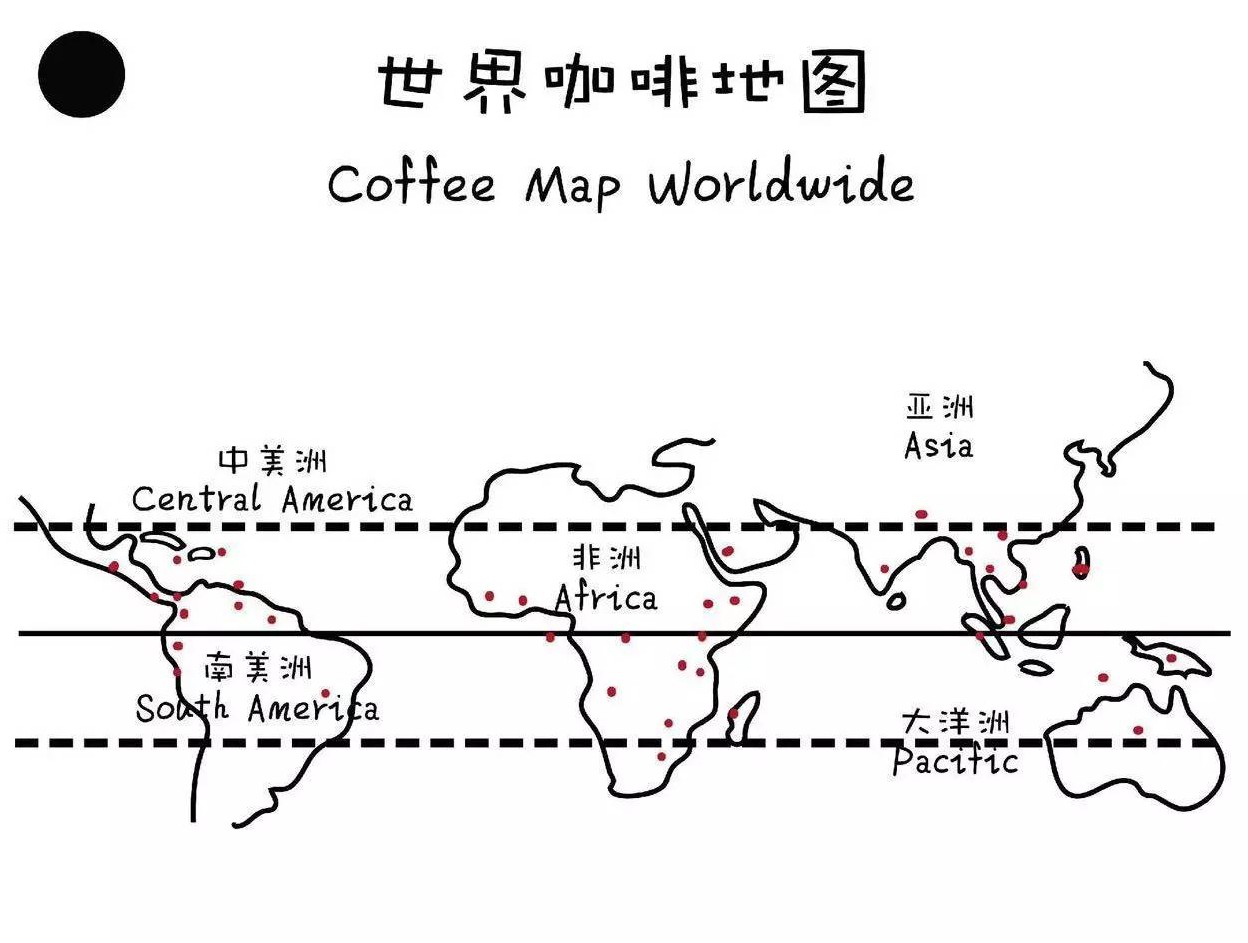
As mentioned above in Qianjie Coffee, these three producing areas all have their flavor representatives, so let's talk about the representative of individual coffee beans with outstanding flavor in these three major coffee producing areas.
Coffee beans from Africa
The flavor of the African region is mainly sour. Qianjie Coffee thinks that nothing can best represent the African coffee region than Ethiopia, where coffee originated, and neighboring Kenya. Although the coffee beans in these two areas are famous for their pleasant acidity, their acids are indeed very different. For example, Ethiopia has always been famous for the citrus citric acid of Yegashifi coffee beans. Kenyan coffee beans are famous for their sour fruit. Next, Qianjie Coffee will introduce the coffee beans from these two producing areas.
Coffee beans from Ethiopia
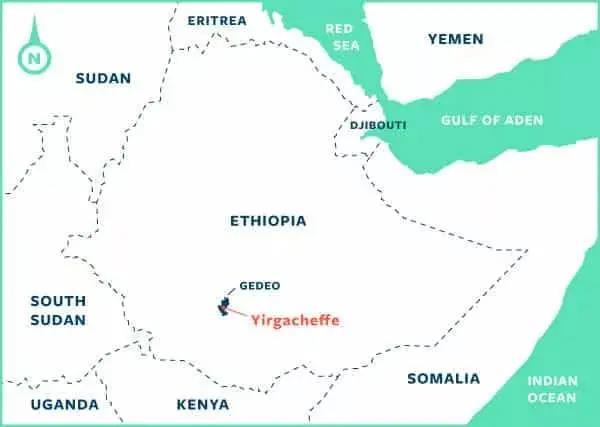
The most famous coffee producing area in Ethiopia is Yega Xuefei, in which there are many micro-producing areas, and the micro-producing areas are affected by factors such as altitude and microclimate, which makes the coffee beans produced by different cooperatives have a slightly different flavor. Therefore, in the Qianjie coffee shop, there are also a lot of coffee beans from various micro-producing areas of Yega Xuefei that use different treatments to taste for coffee fans.
Front Street Coffee Essex plus Sheffield Sun Red Cherry Coffee beans
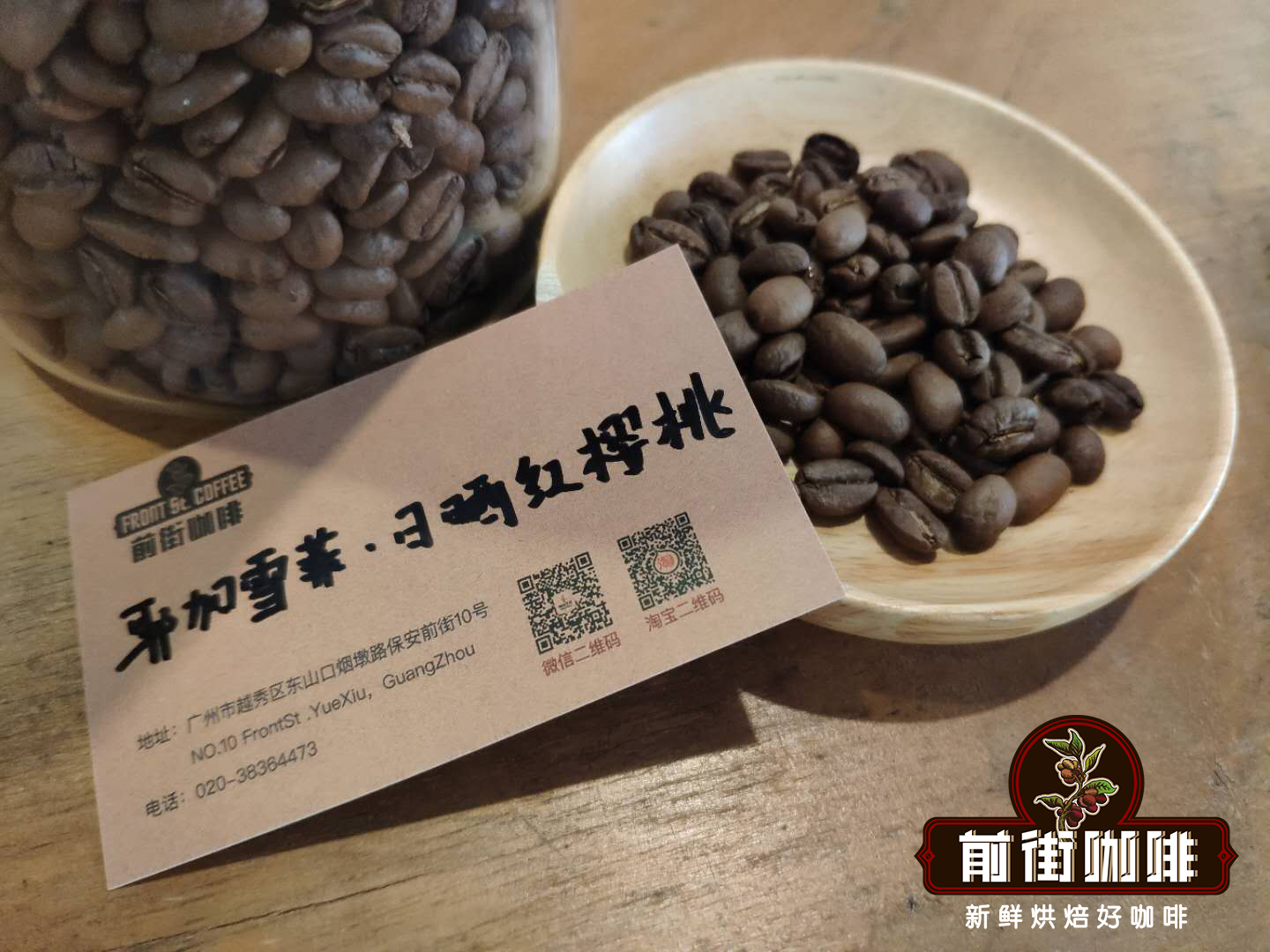
Country: Ethiopia
Producing area: Yega Xuefei
Altitude: 2300m
Variety: native species
Treatment: sun treatment
Flavor: berries, lemons, strawberries, fermented wine
Qianjie Coffee this sun-red cherry coffee beans are made from 100% ripe coffee beans, so they are fragrant, sweet and fermented.
The origin of this coffee bean comes from the "Red Cherry Project" jointly launched by Ethiopian local coffee farmers and Dutch trader Trabocca. It aims to improve the quality of coffee on small-scale farms and increase the income of farmers. To pick fully ripe coffee fruit, we should not only pick the fruit with high maturity of full red, but also harvest it by hand, but this is only the most basic requirement. There are also corresponding requirements for the treatment of coffee beans.
Qianjie Coffee Essex Tintin Cooperative Coffee beans
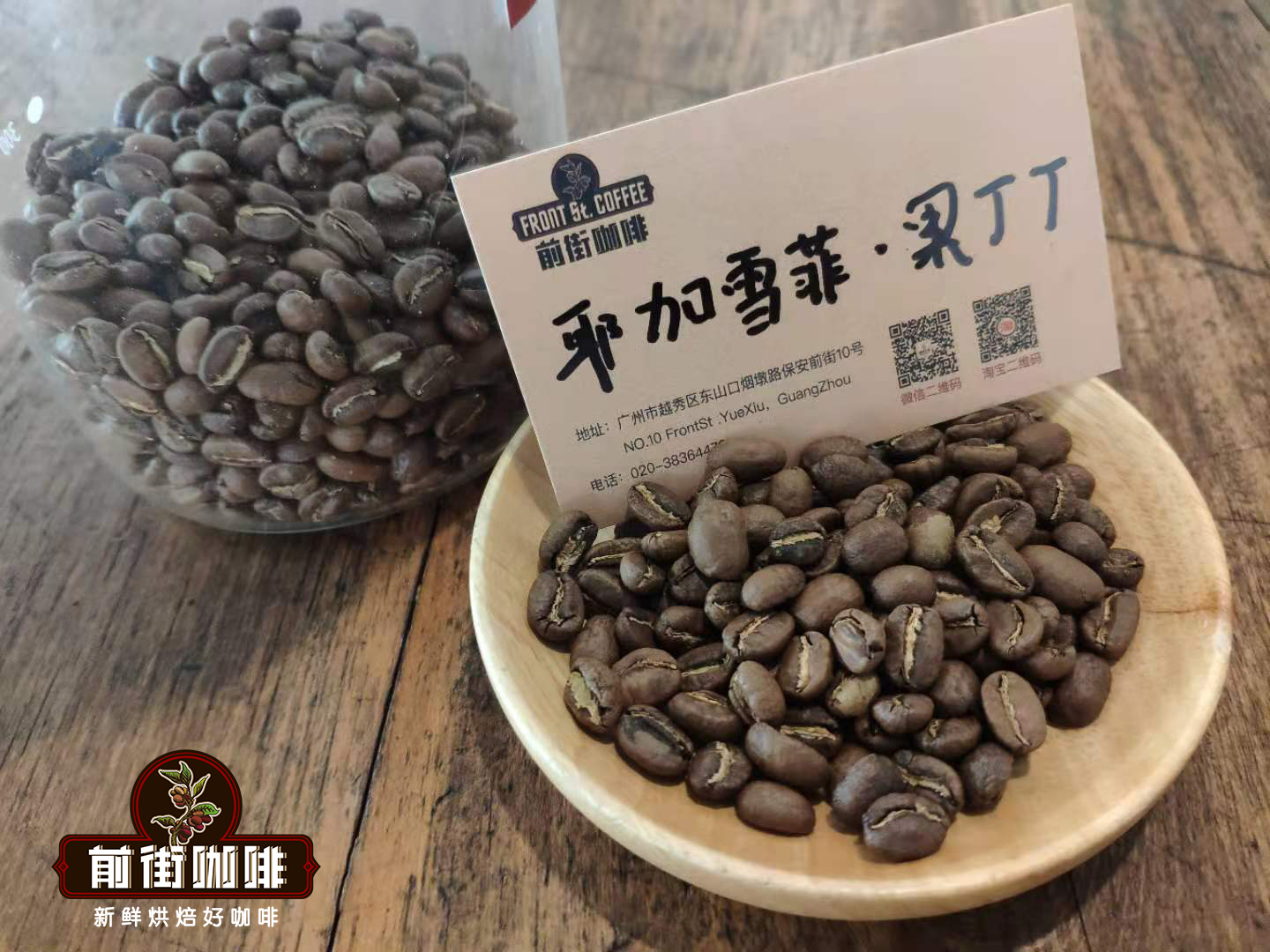
Country: Ethiopia
Producing area: Yega Xuefei
Altitude: 1900-2300m
Variety: native species
Treatment: washing treatment
Flavors: tropical fruits, cream, honey, berries, citrus
According to Qianjie, the Guotintin Cooperative was originally part of the Waka Cooperative of the YCFCU of the Yega Sheffield Union. It became an independent Guotintin Cooperative in 2012 and now has more than 300 smallholder members. At the same time, it is precisely because Guodingding Village is the first independent village area, and many small farmers were also members of the Waka Cooperative, so the technology of producing coffee is not to mention. The natural flavor of the coffee beans is excellent.
Front Street Coffee Yega Sheffield Aricha Coffee beans
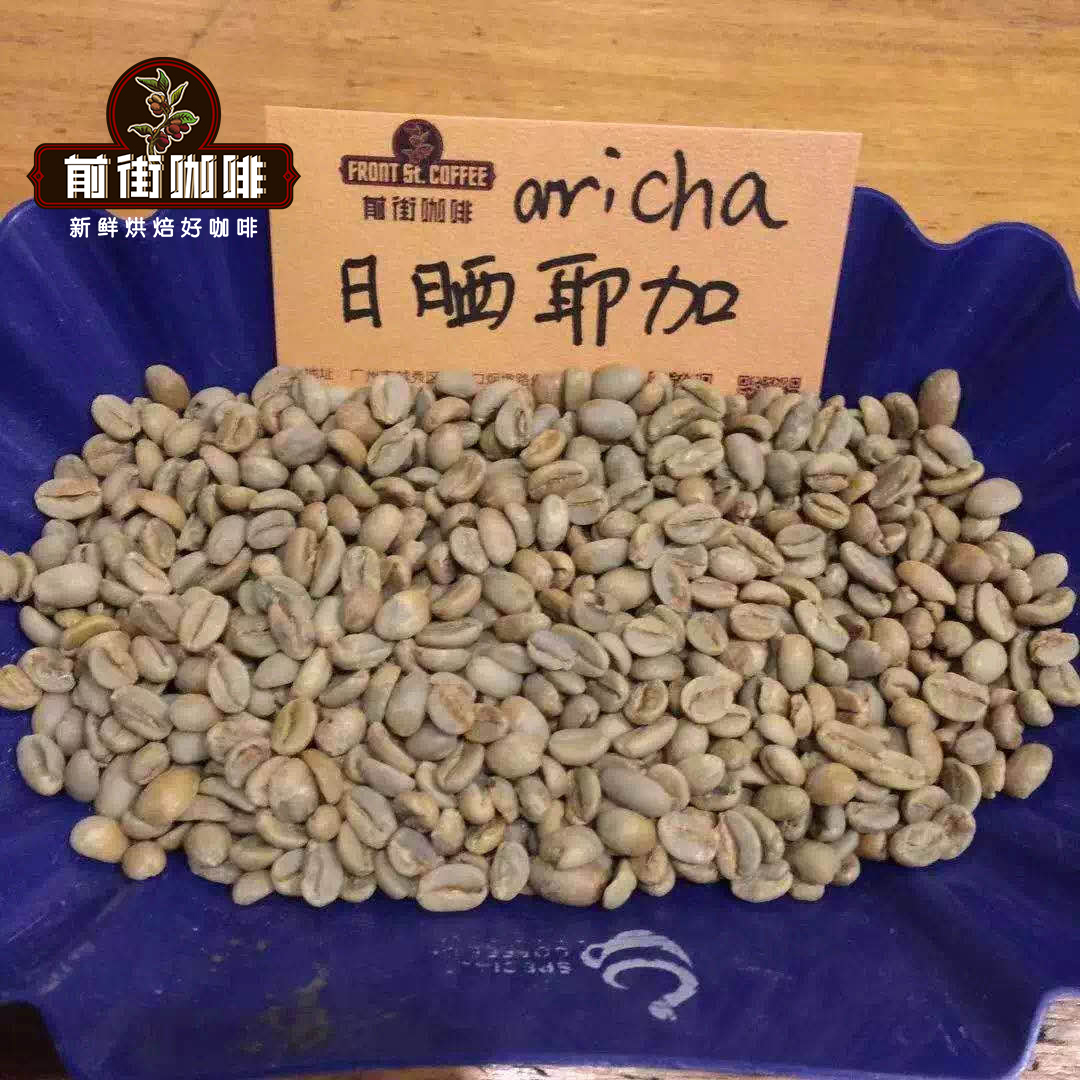
Country: Ethiopia
Producing area: Yega Xuefei
Altitude: 1900-2100m
Variety: native species
Treatment: sun treatment
Flavor: light fermented wine, sweet orange, spices, honey sweet
Aricha is produced at the Kebel Aricha processing plant, and there are about 650,700 small coffee farmers nearby. Farmers send ripe coffee berries here for processing and cash. After the treatment plant selects the available berries, they are directly exposed to the sun on the scaffolding and are turned every 2-3 hours in the first few days to prevent overfermentation. After four to six weeks of sun exposure, the workers will scrape off the outer pulp with a machine according to the weather and temperature, and then transport it to addis for storage. Usually, sun-treated beans are stored in the form of shell beans, and they are not shelled until they are exported to ensure the quality of raw beans.
Kenyan coffee producing area
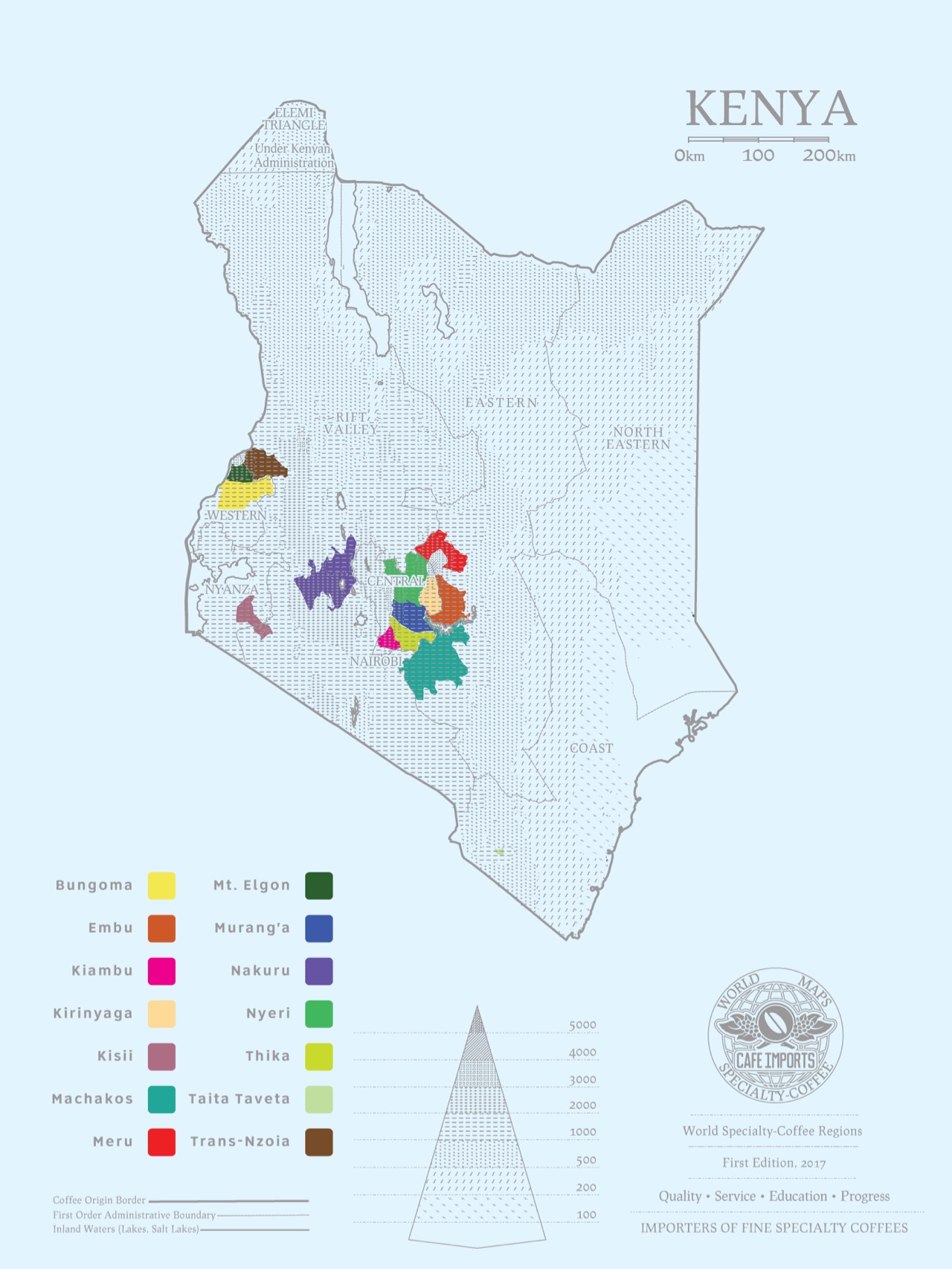
As mentioned above in Qianjie Coffee, Kenyan coffee beans are mainly famous for their unique sour fruit, which is also due to the local development of 72-hour washing treatment, as well as the Kenyan unique sl34,sl28 coffee variety, which are all factors that contribute to the flavor of Kenyan coffee.
Front street coffee Kenya Azaria coffee beans
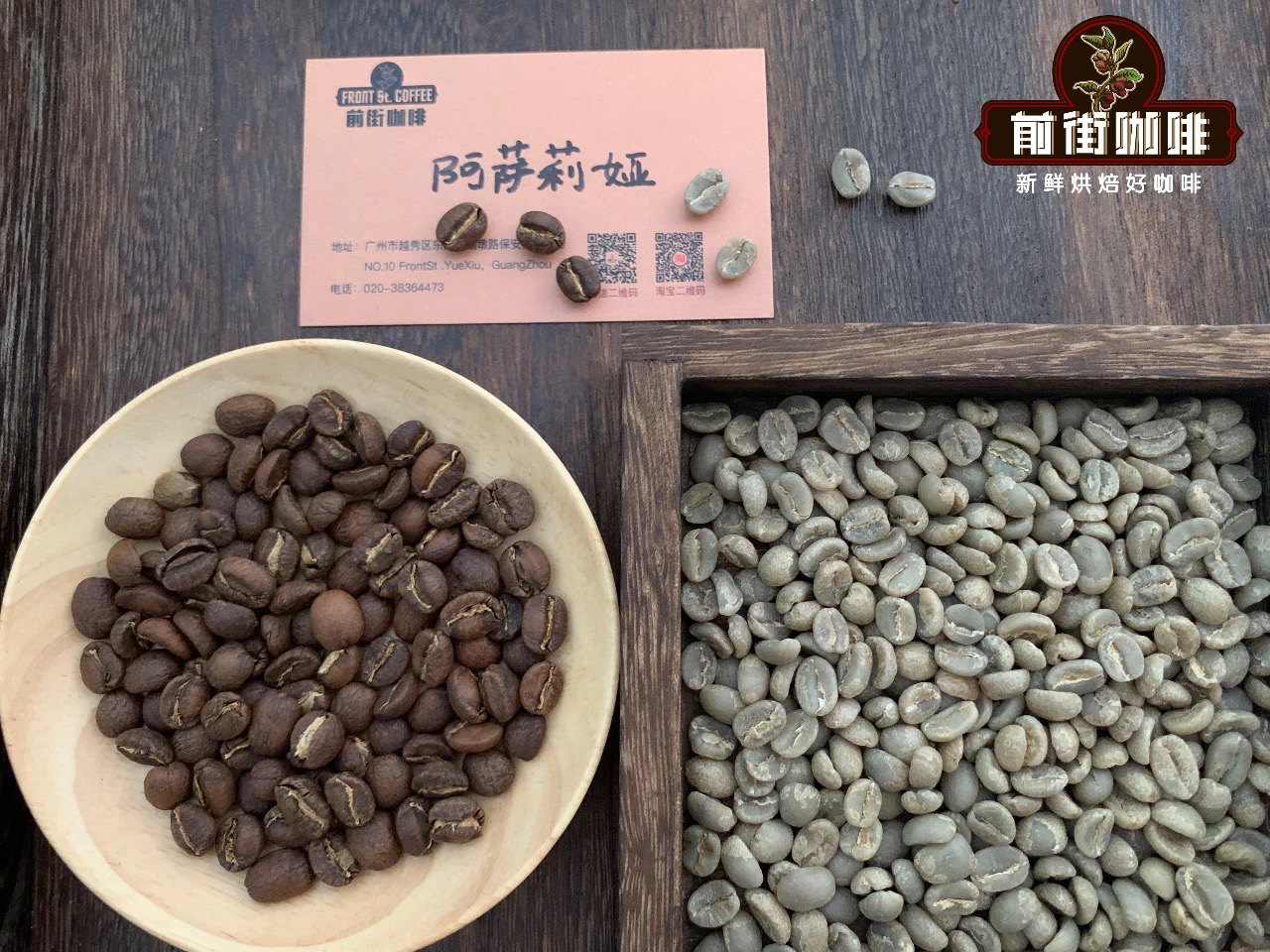
Country: Kenya
Production area: Asali (Honey processing Plant)
Altitude: 1550-1750m
Variety: SL28,SL34
Treatment method: 72 hours washing treatment
Flavor: Sydney, black plum, brown sugar, virgin fruit, Brin
Qianjie Coffee, a Kenyan Asaria coffee bean, is the 72-hour washing method developed in Kenya, in which the coffee beans need to be fermented for a long time at low temperatures and finally dried and dehydrated. The coffee beans treated here can have a brighter, cleaner and fuller flavor.
Coffee beans from Asian regions
The representatives of Asian coffee producing areas are definitely Indonesia's Mantenin and Yunnan coffee. These two kinds of coffee beans have the unique herbal flavor of Asian producing areas. Then Qianjie Coffee will introduce the coffee beans of these two producing areas respectively.
Coffee beans from Indonesia
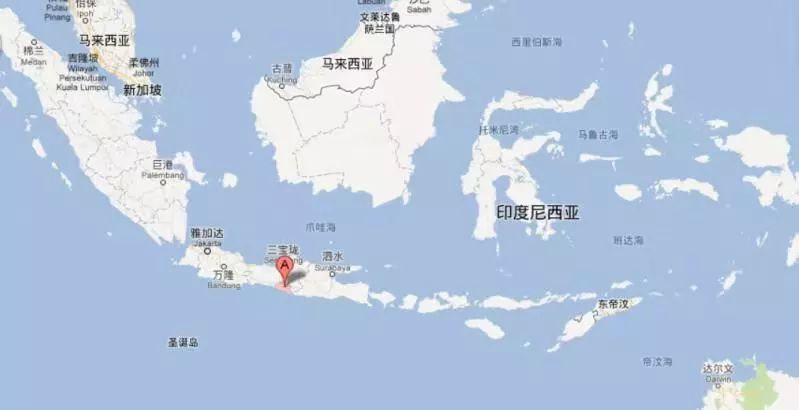
Indonesia Mantenin is famous for its humid climate, so local coffee farmers have issued a wet planing method to deal with coffee beans, which will give coffee beans a unique earthy herbal flavor and taste very mellow. therefore, Mantenin is also loved by coffee fans all over the world, such as Mantenin, the most popular single coffee bean in Qianjie coffee shop. And Qianjie Coffee believes that wet planing is the factor that makes Mantening coffee to the world, because when it comes to Mandy coffee, coffee fans will think of wet planing, which shows that they already complement each other.
Qianjie Coffee Indonesia Gold Manning Coffee beans
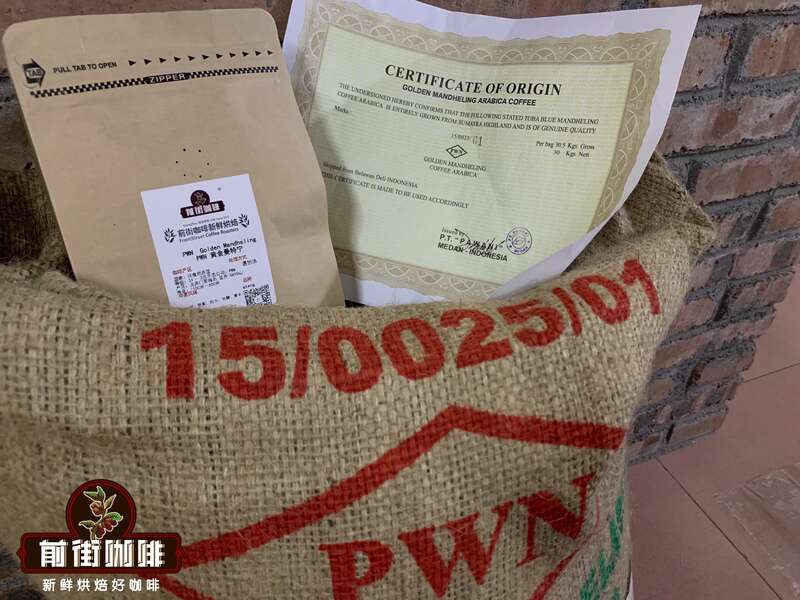
Country: Indonesia
Producing area: Mount Aceh Jiayu, Sumatra
Altitude: 1100-1600m
Variety: Ateng
Treatment method: wet planing method
Flavor: baked toast, nuts, pine, caramel, herbs
The front street gold manning is the latest launch of the pwn company in recent months. Unlike the previous pwn gold manning, the latest batch of mantenin's producing area is Mount Achigayo in Sumatra, while the previous one is produced in Lake Tawa, Sumatra. According to the test of brewing this latest gold manning coffee in the front street cup, it is found that compared with the previous gold mantenin, it is more of the flavor of baked toast. So it will be a little more mellow in the taste.
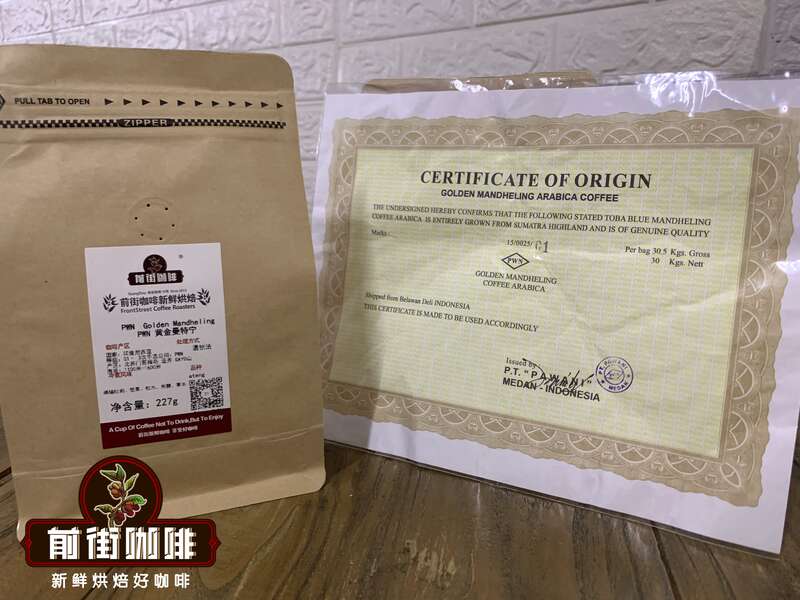
And the specification standard of Golden Manning is more than 18 mesh, and there are less than 3 defective beans (300g raw bean samples), which belongs to the highest grade G1, dark green and neat flat beans. After strict screening of Golden Mantenin, Qianjie Coffee not only does not have the unique soil flavor of ordinary Mantenin, but also tastes cleaner and brighter.
Qianjie Coffee Indonesian Tiger Mantenin Coffee beans
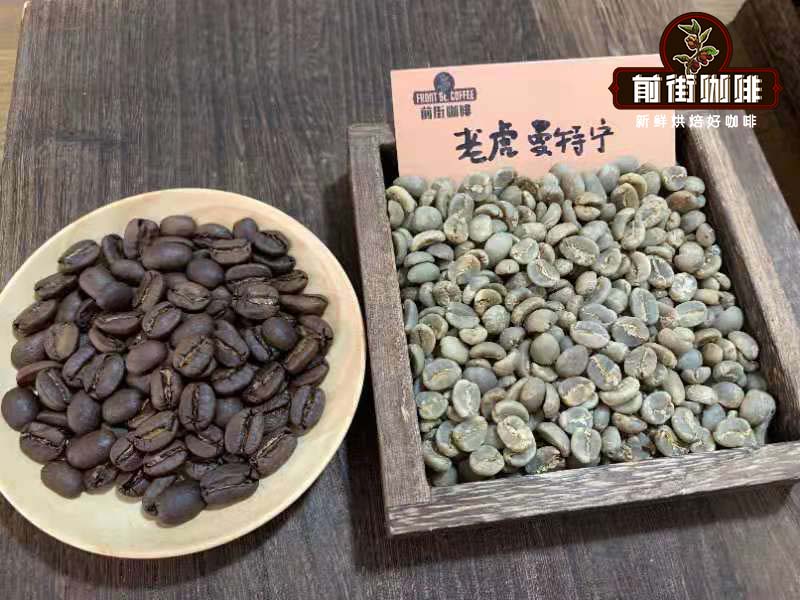
Country: Indonesia
Origin: Sumatra
Altitude: 1500m
Breeds: Kadura, Iron Pickup, Sidikalong
Treatment: wet planing
Flavor: Cream, dark chocolate, nutty, balanced flavors
A tiger mantinin is only called a tiger mantinin if it has more than 17 eyes and has a defect rate of less than 4%. As the main species of tiger mantinin is kadura, iron pickup. Kadura tastes sour with citrus and lemon, while iron pickup has a sweet aftertaste that lasts, making Tiger Man taste more uniform and clean.
Front Street Coffee Indonesian aged mantinin coffee beans
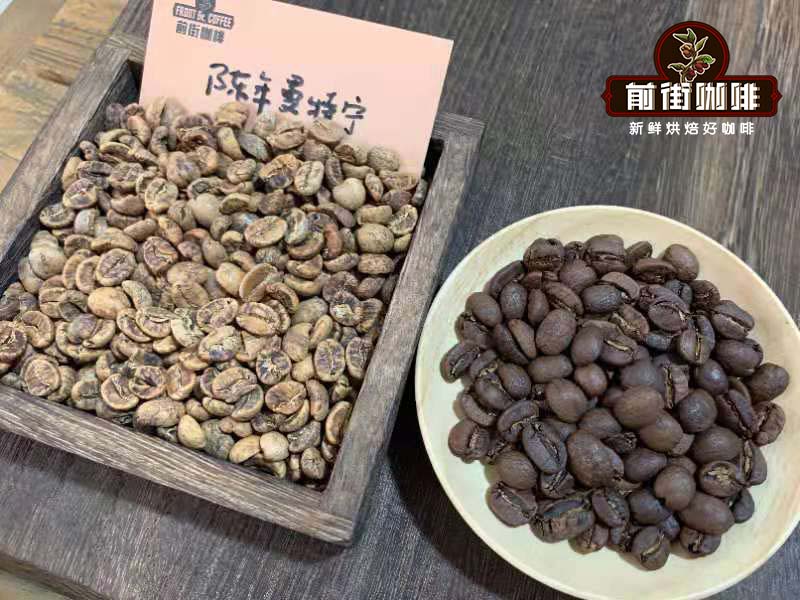
Country: Indonesia
Producing area: Sumatra
Altitude: 1500m
Variety: Kaddura, Kaduai
Treatment method: wet planing method
Flavor: cooked, caramel, herbs, chocolate, low acidity.
Aged mantenin refers to aged Mantenin coffee beans, which age naturally by prolonging the storage time (usually 2-3 years), a process that leads to a decrease in coffee acidity and a change in the color of raw beans. And the storage environment of aged coffee beans must be cool and ventilated to prevent mildew and dampness. Because the storage environment is dark and for a long time, improperly handled old coffee is always difficult to get rid of complex flavors such as mildew or commonly known as sacks or leather.
Coffee beans from Yunnan, China
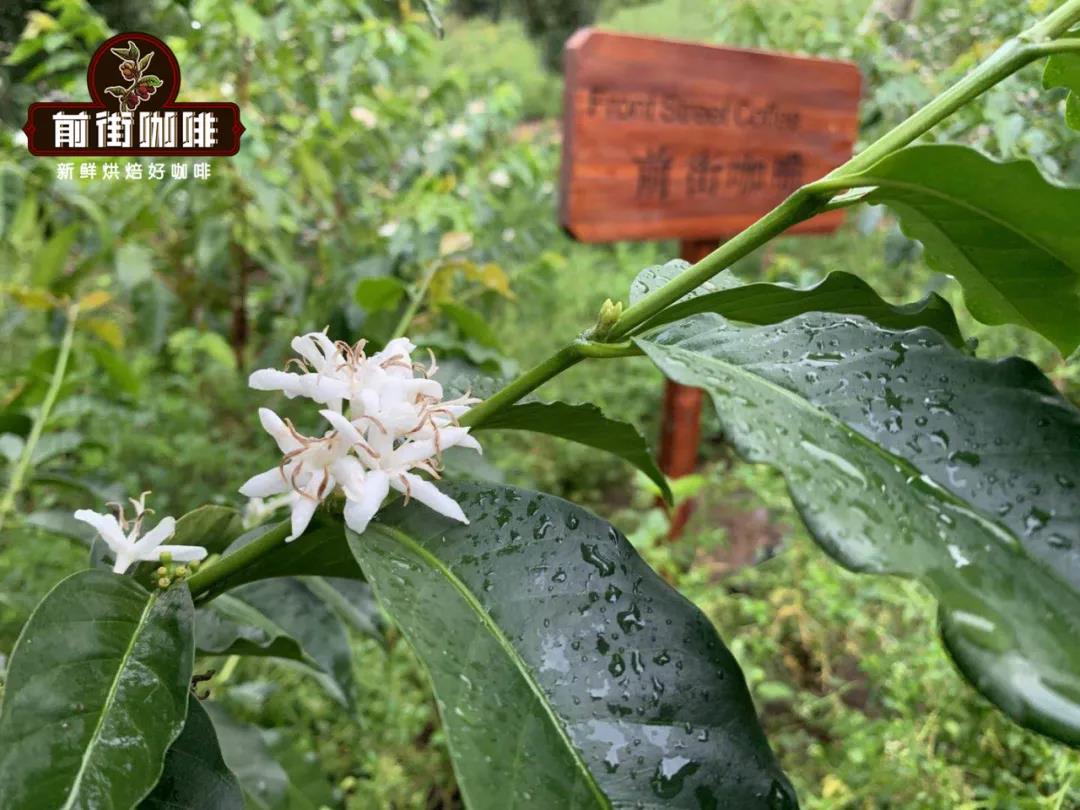
In fact, Yunnan producing areas have a long history of growing coffee, but it has not been long to enter the boutique coffee market, so Qianjie Coffee believes that Yunnan producing area coffee has great potential for development. therefore, a coffee estate has been set up at the junction of Yunnan Baoshan and Myanmar, specializing in growing Yunnan coffee beans with iron card varieties. Next, Qianjie Coffee will introduce Yunnan coffee beans from Qianjie Coffee Farm.
Qianjie coffee Yunnan Huaguoshan coffee beans
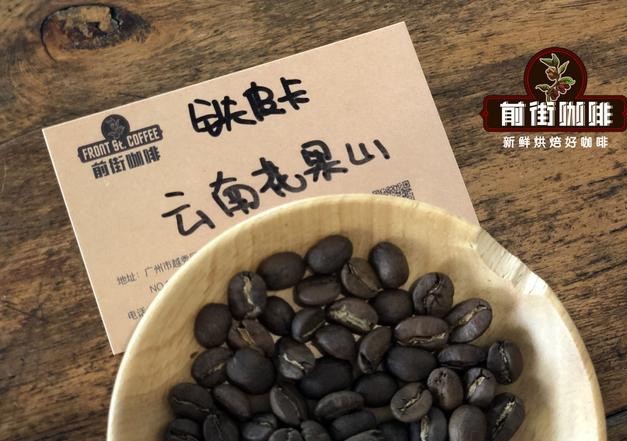
Country: China
Producing area: Baoshan, Yunnan
Altitude: 1450-1550m
Variety: iron pickup
Treatment: washing treatment
Flavor: citrus, nuts, plums, melon and fruit, brown sugar, black tea
Qianjie Coffee the difference between Yunnan Huaguoshan coffee beans and Yunnan Xiaoguo beans is that Huaguoshan is a variety of iron pickup, while Yunnan Xiaoguo is Katim, in fact, these two beans can be called small-grained coffee, but because the acid of Tippi card flower fruit is softer and richer, it is specially chosen to distinguish the two varieties of beans in the name of Huaguoshan.
Qianjie Coffee Yunnan small Coffee beans (rations beans)
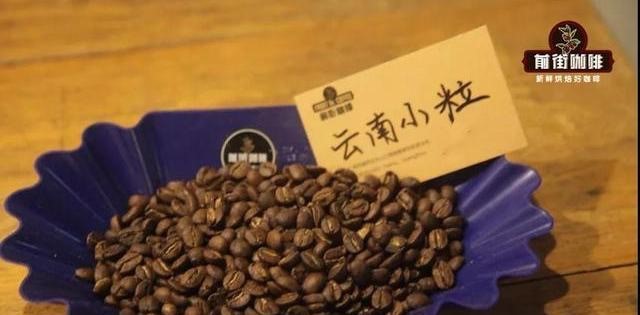
Country: China
Producing area: Baoshan, Yunnan
Altitude: 1200m
Variety: Katim
Treatment: washing treatment
Flavor: herbs, nutty, chocolate, caramel
Yunnan small-grain coffee refers to the small-grain coffee cultivated in Yunnan. Coffee is a small evergreen tree of Rubiaceae, native to Africa. At present, small-grain coffee and medium-grain coffee are mainly cultivated as beverage plants. The small-grain coffee cultivated in Yunnan, China traditionally refers to the mixed population of bourbon variety and iron pickup variety.
Small-grain coffee is the most widely cultivated species in the genus Coffee. Because of its strong cold resistance and short-term low temperature resistance, it can grow on mountains 2100 meters above sea level in tropical areas, but it is not resistant to drought; the branches are fragile and not resistant to strong wind; the disease resistance is weak; the fruit is easy to fall off after ripening; after processing, the coffee is mellow and contains low caffeine content.
Qianjie Coffee Yunnan Sun Katim Coffee beans
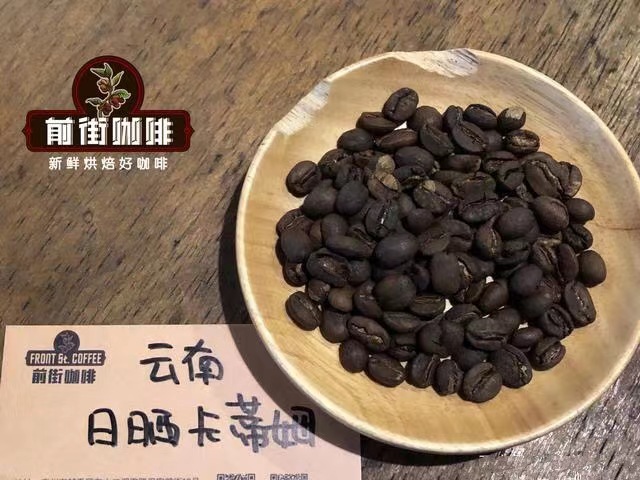
Country: China
Producing area: Yunnan (Baoshan)
Altitude: 1450-1550m
Variety: Katim
Treatment: red cherry sun treatment
Flavor: caramel, dried fruit, cocoa, dark chocolate, herbs, wood
At present, most of the plants in Yunnan are Katim, which is a hybrid of Kaddura and Robsta, a branch of the bourbon line in the Arabica species. The reason for planting this variety is that Katim has the Robusta gene, so it is better than a single old variety in disease resistance, and the yield is good. Compared with the delicate old variety, the disease resistance is poor and the yield is low. Farmers naturally prefer to plant Katim. So now there has been a Katim wind in Yunnan.
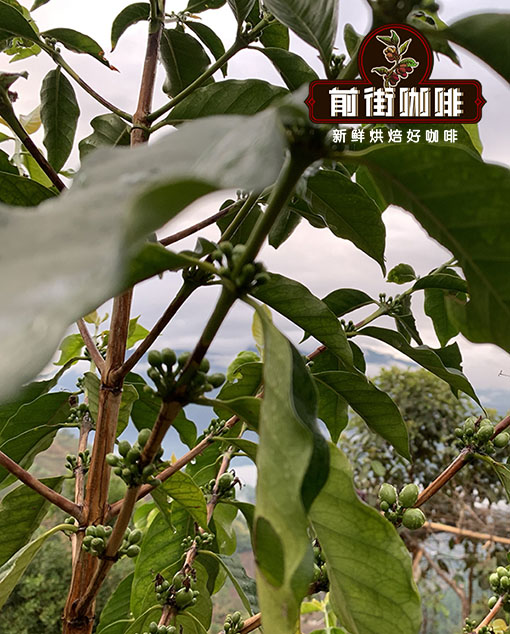
Coffee beans from Latin America
The article in front of the street also mentioned that the flavor of Latin American coffee beans is famous for its balance and has a nutty cocoa flavor. This is because the topography and climate conditions of Latin America have changed greatly, so its coffee flavor is not as extreme as that of Asia and Africa. Instead, it neutralizes their coffee flavor. Among them, the more representative producing areas are Brazil, the world's largest coffee producer, and Costa Rica, the founder of the honey treatment method, as well as Colombia. Next, Qianjie Coffee will introduce the coffee bean representatives of these three producing areas.
Coffee beans from Brazil
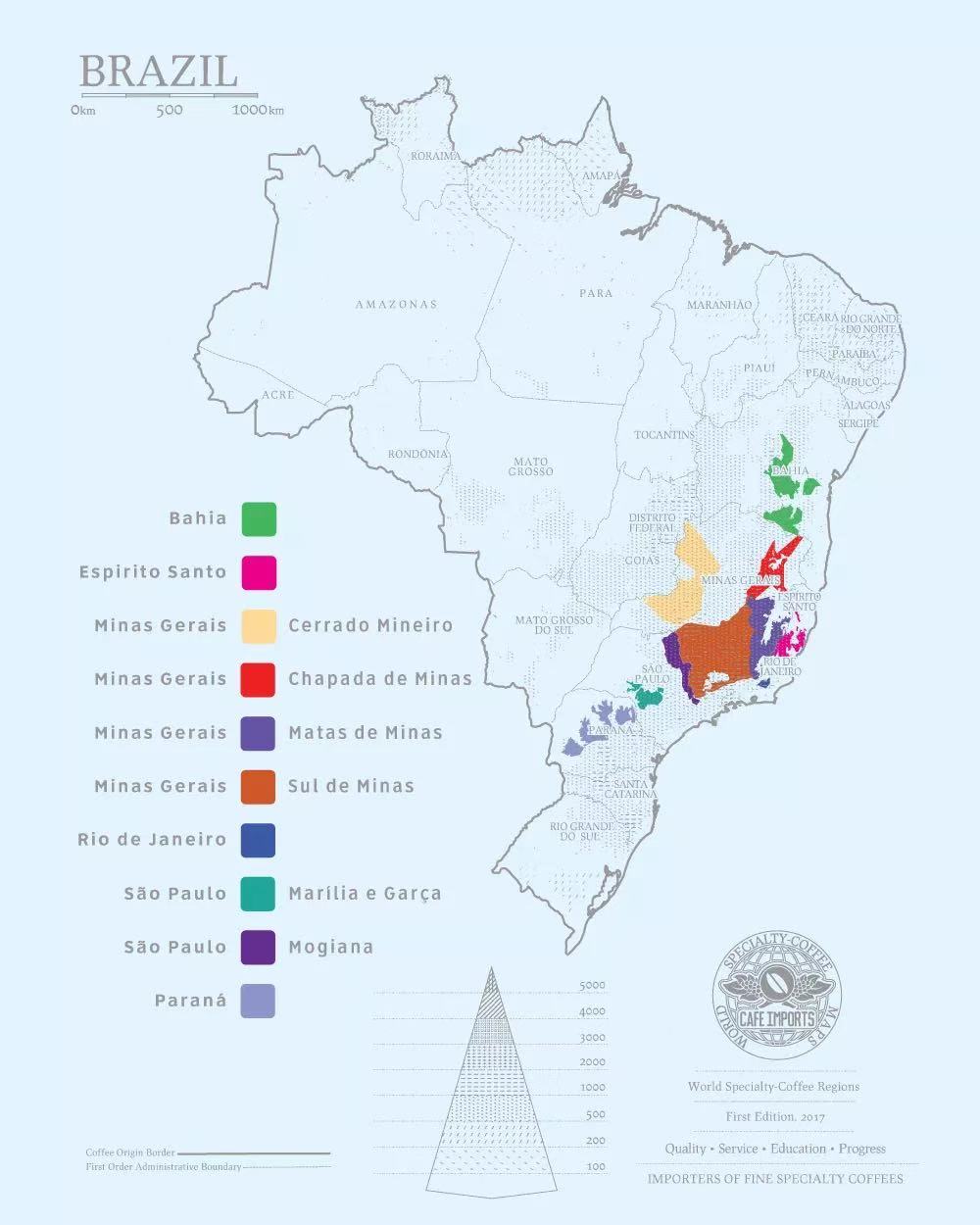
Brazil mainly grows bourbon varieties of coffee beans, so it also has an excellent sweet taste in the performance of coffee flavor. The next coffee bean is the one that Qianjie thinks best represents the flavor of Brazilian coffee.
Qianjie Coffee Queen Manor of Brazil
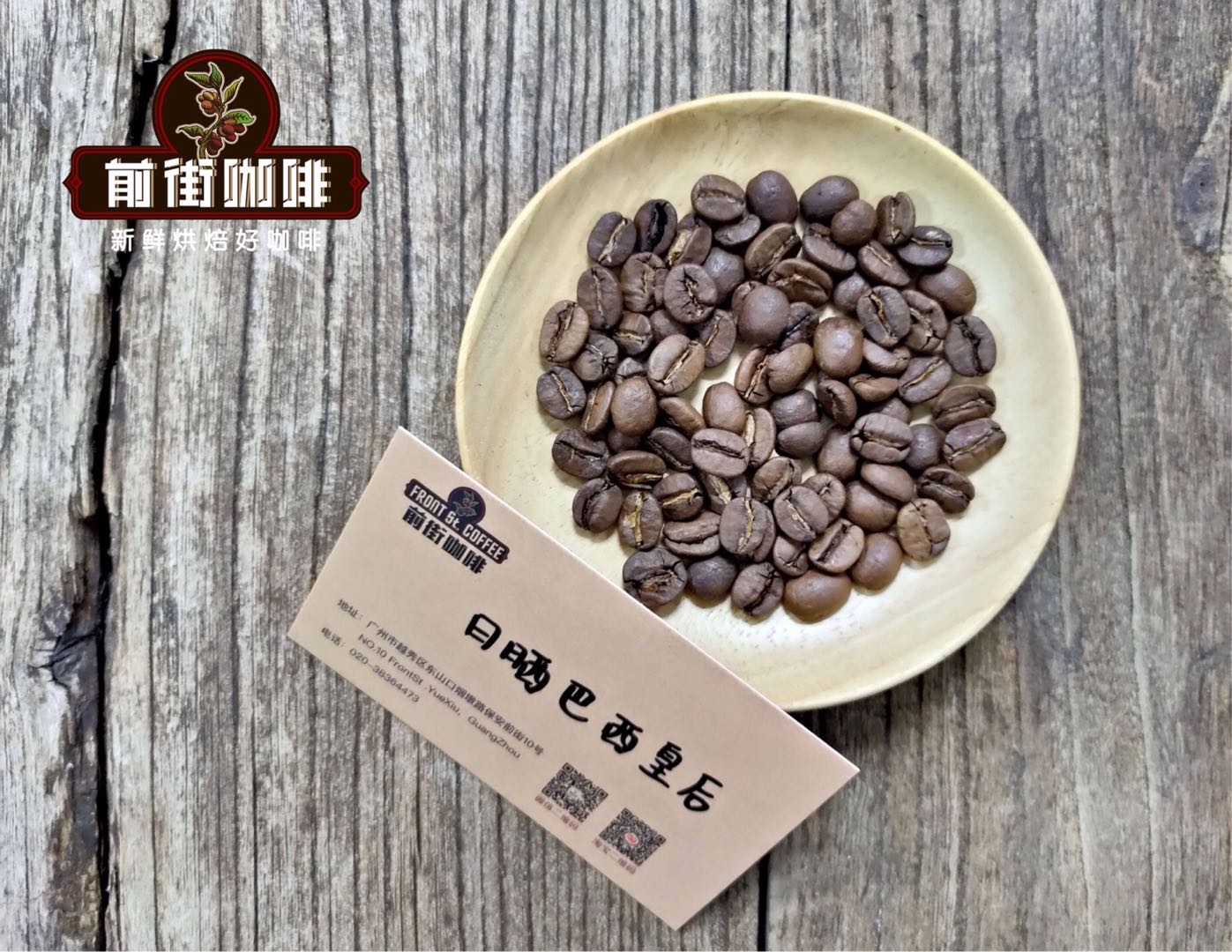
Country: Brazil
Producing area: Morgiana
Altitude: 1400-1950
Variety: yellow bourbon
Treatment: half-sun
Flavor: nuts, creamy peanuts, fermented fruit, sucrose
Queen's Manor mainly exports bourbon varieties of boutique coffee. The environmental protection is quite thorough, because the terrain is high, the non-plain terrain, therefore cannot use the machine to do the harvest, the complete manual harvest fruit. And plant low-yield and high-quality bourbon seeds as the essence of high-quality Brazilian coffee. Therefore, Qianjie believes that the coffee of the manor best reflects the high-quality coffee of Brazil.
Costa Rican coffee producing area
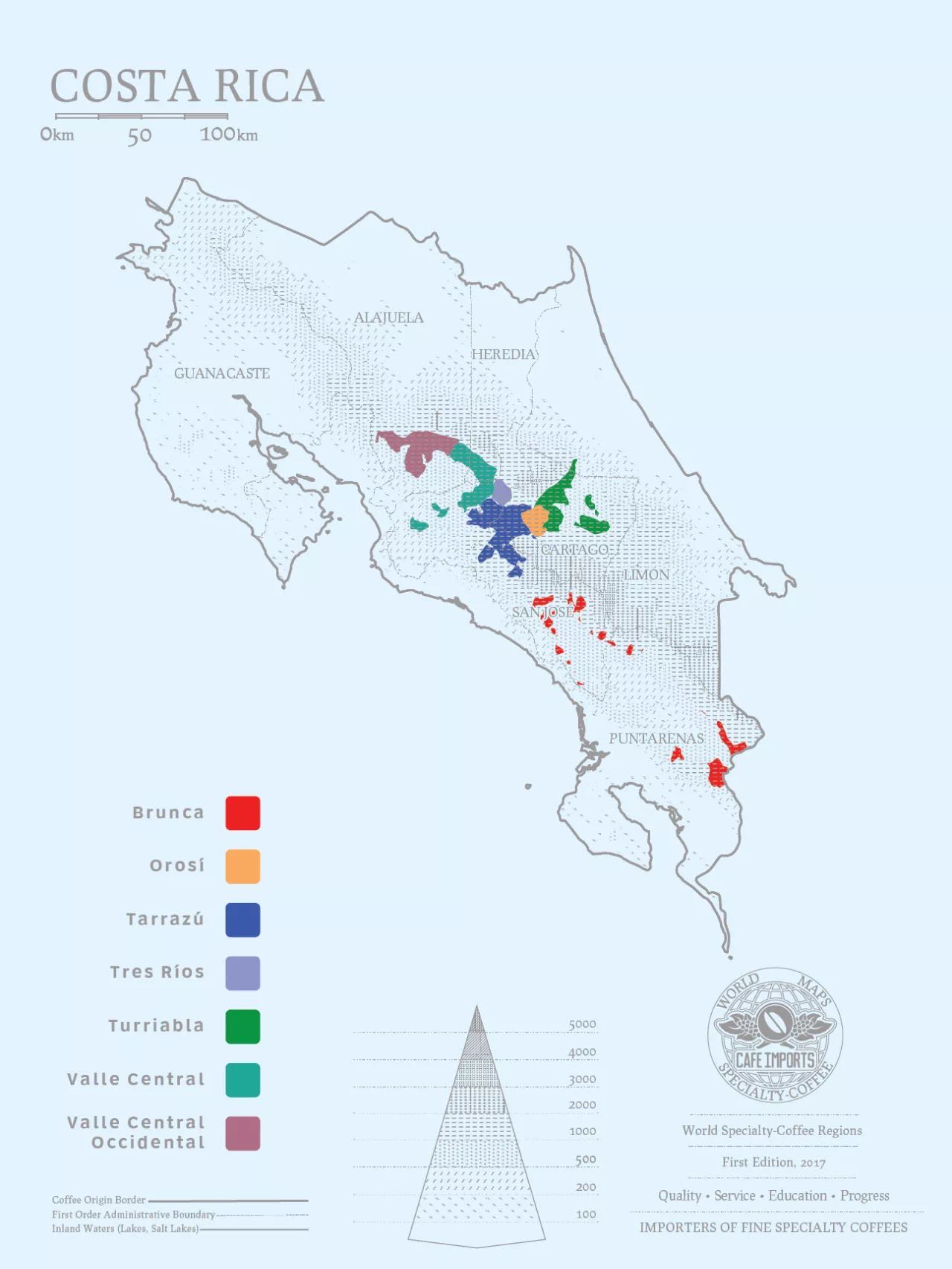
The treatment of coffee beans in Costa Rica mainly uses honey treatment, this is because the local coffee farms are on the mountain, it is very inconvenient to send to the coffee processing plant at the foot of the mountain, and the coffee fruit is easy to be dampened along the way. and bean collectors also purchase coffee beans at exploitative prices, so when coffee farmers develop and deal with unique honey-treated coffee beans, they produce and sell their own products and increase profits.
And with the improvement of Costa Rican coffee technology, there are many special honey-treated coffee beans on the market, such as the musician series coffee launched by Costa Rica Carnett Manor in the front street store is very popular with coffee fans.
Front Street Coffee Costa Rican musicians Series Bach Coffee beans
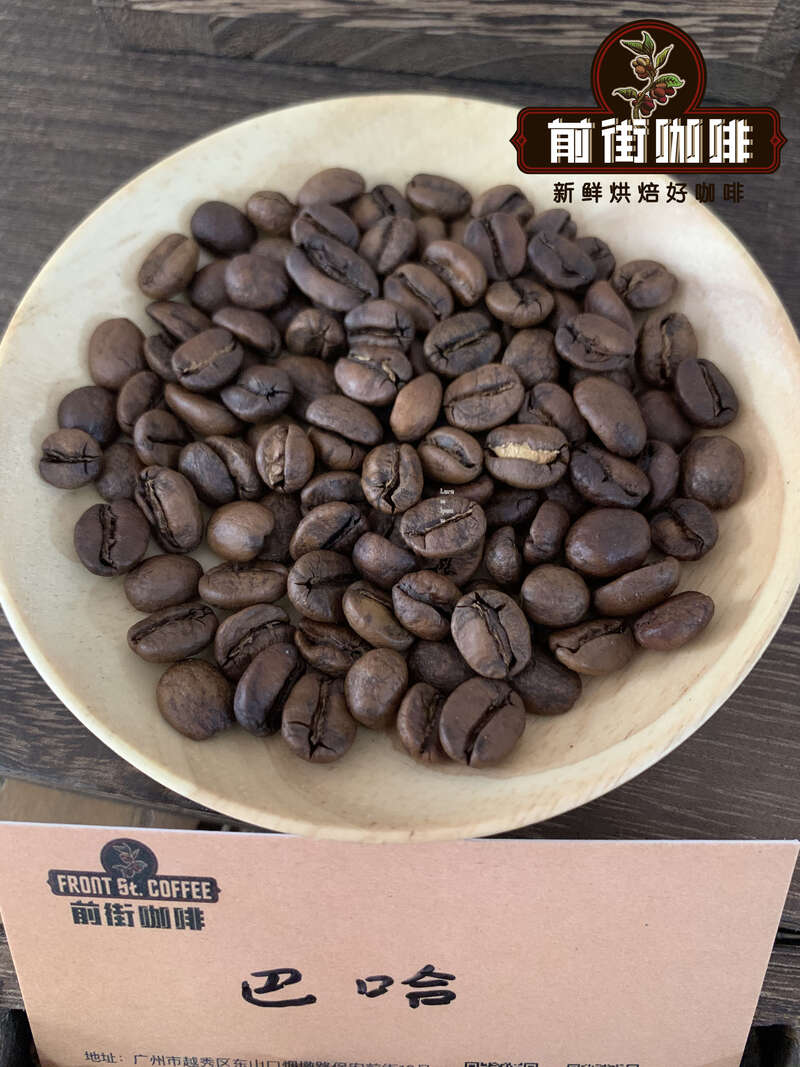
Country: Costa Rica
Producing area: Tarazhu
Altitude: 1950m
Variety: Kaddura
Treatment: raisin honey treatment
Flavor: tropical fruits, berries, nuts, cream, caramel, floral aromas
Qianjie Coffee this Baja coffee bean is treated with grape dried honey, which retains 100% pectin of the coffee fruit and uses zero water treatment, so it is a very sweet coffee bean. Bach coffee beans show the taste of white wine and balanced acidity, and the flavor will be more fermented.
Front Street Coffee Costa Rican musicians Beethoven Coffee beans
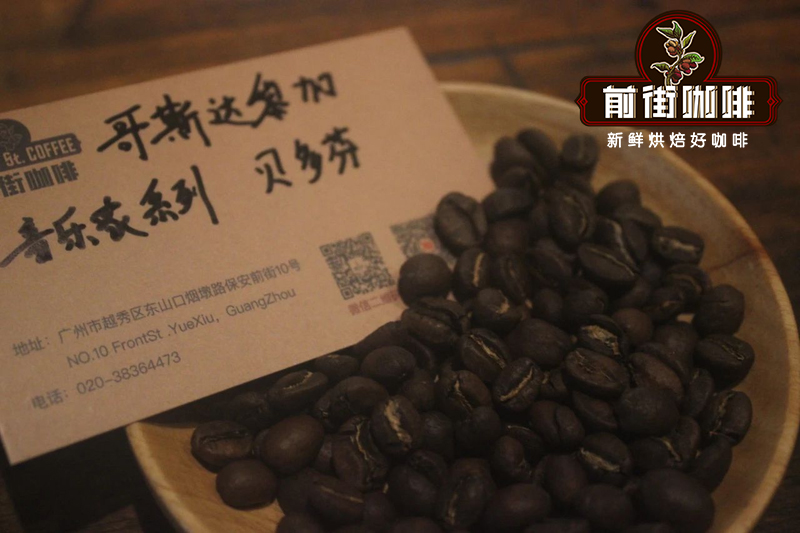
Country: Costa Rica
Producing area: Tarazhu
Altitude: 1800-1950 m
Variety: Kaddura, Kaduai
Treatment: washing treatment
Flavor: light fermented wine with citrus and berry floral aromas
This Beethoven coffee bean in Qianjie Coffee Shop is the only coffee bean in the musicians' series to be treated with water, so it will be cleaner and brighter in flavor, with citrus aromas.
Colombian coffee producing area
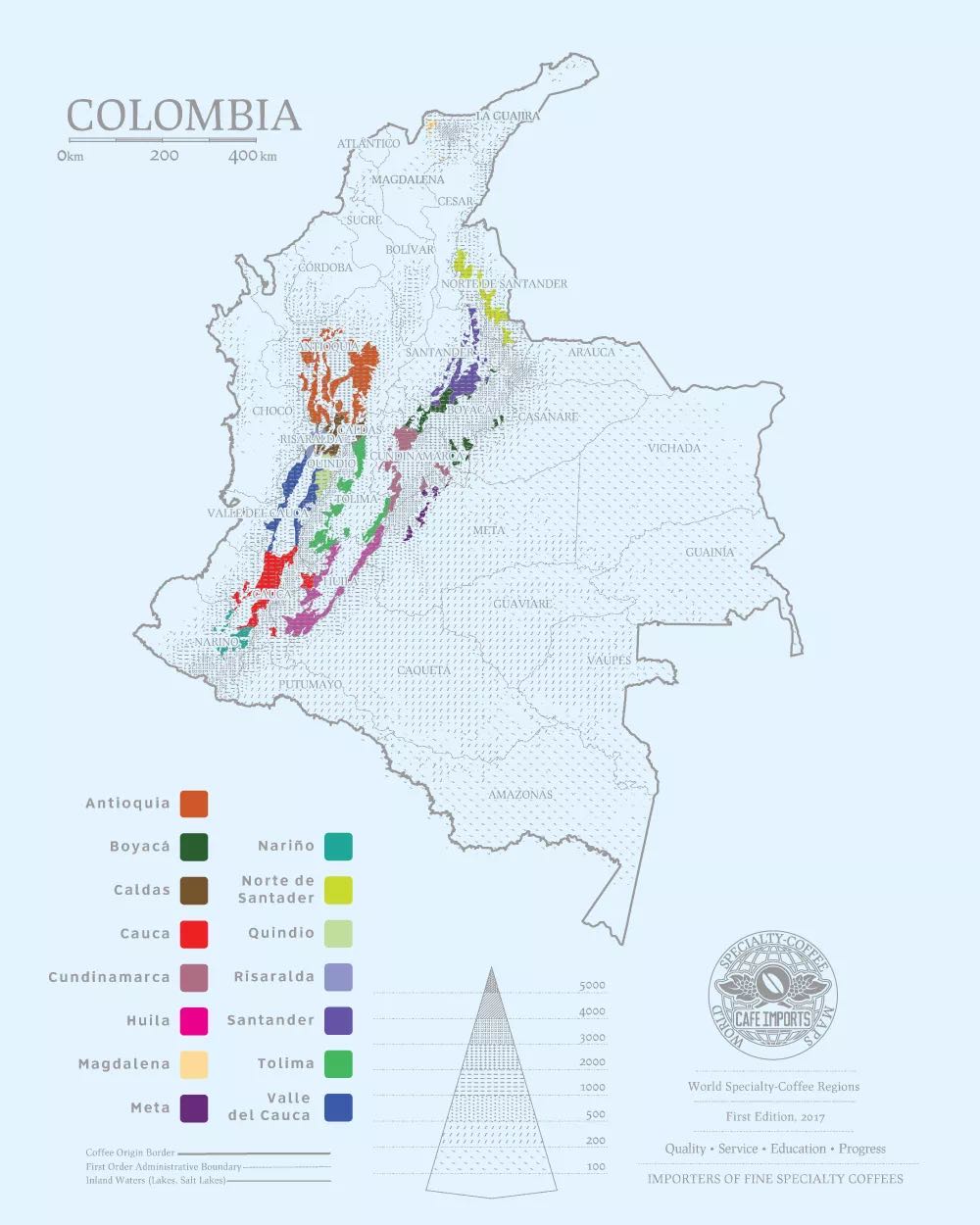
Colombian coffee is the second largest coffee exporter in the world, and it is also the country that exports the most Arabica coffee beans. In Colombia, there are also many coffee beans treated with special treatment, and the flavor expression is also very amazing. Next, let's recommend some special coffee beans in Colombia.
Front Street Coffee Columbia San Jose Manor Coffee beans
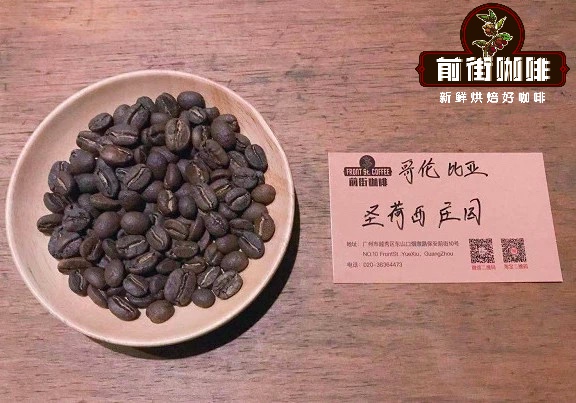
Country: Colombia
Producing area: Caldas
Altitude: 1750m
Variety: Castillo
Treatment method: refined water washing rum barrel fermentation treatment
Flavor: rum, wine heart chocolate, tropical fruit, maple syrup
The owner of the San Jose Manor can be said to be the founder of the barrel fermentation process. according to Qianjie, she is the third-generation hostess of the San Jose Manor, because she is committed to promoting Colombian coffee. produced by breaking through and trying to find a different way in the wave of traditional production and modern boutique coffee. On this premise, she had an idea when she was brewing rum with her husband and wondered whether putting raw coffee beans in oak barrels would absorb the oak flavor like the original wine and achieve the effect of barrel brewing.
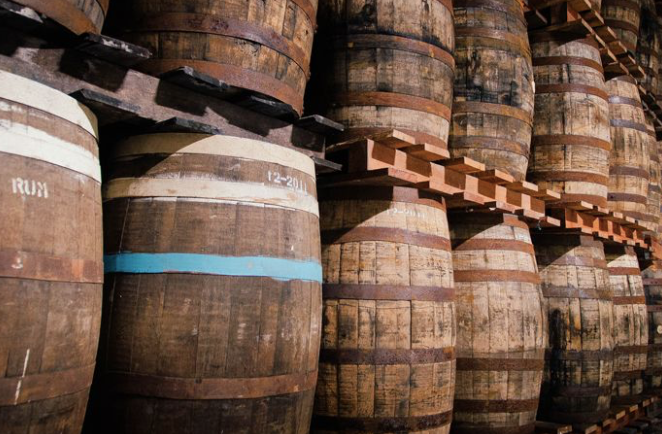
Under this idea, the hostess Monsalve Botero began to put raw beans into rum barrels of different ages for low-temperature fermentation in 2013, and compared the fermentation flavor produced at different times, through this experiment, the most suitable bucket and fermentation time length were selected. Finally, we successfully found the most suitable combination to achieve a special and satisfactory flavor, so as to produce rum barrel fermented coffee which is different from traditional rum washing.
Front Street Coffee Columbia Flower Moon Night Coffee beans
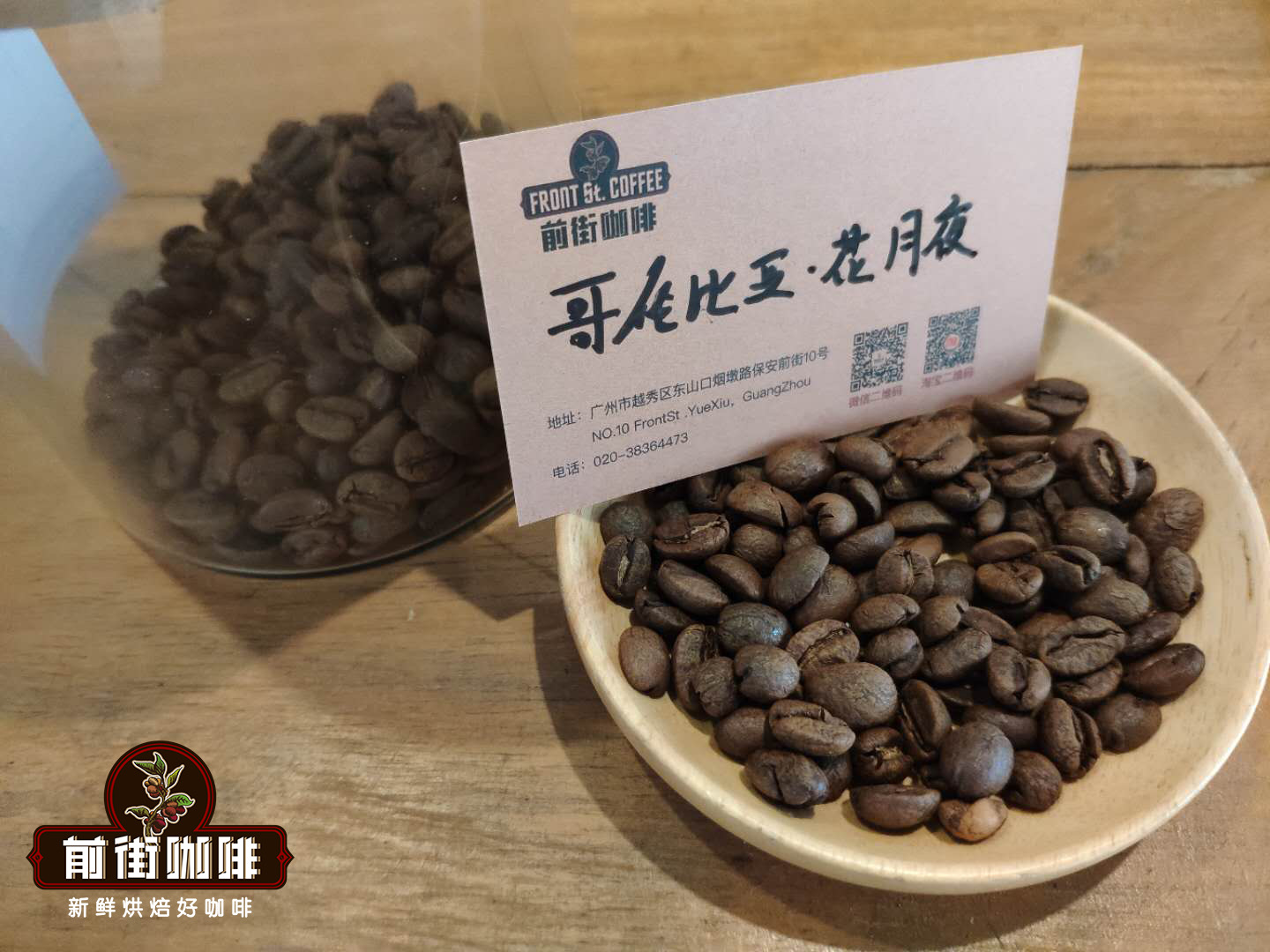
Country: Colombia
Production area: Huilan (Esteogatine Farm)
Altitude: 1800m
Variety: Kaddura
Treatment: anaerobic solarization
Flavor: strawberry, peach, fermented wine, chocolate, fruit wine
This moonlight coffee bean in Qianjie comes from the anaerobic sun-dried coffee beans developed by Ramirez, the owner of Astorgatin Farm. According to Qianjie, he comes from a coffee-growing family and has been engaged in coffee production since the age of 18. He used to work as a coffee professional in Acevedo, and later had the opportunity to buy this farm called Astorgatin Farm.
And this farm grows Kaddura, our common coffee variety. Kaddura is a natural variety of bourbon, often with refreshing fruit acidity and a hint of sweetness. At the same time, it also sets the tone for Hua Moon Night Coffee. And as early as three years ago, the former landowner of Gatine Farm launched the special treatment program and told Ramirez how to carry out the special treatment project, and Ramirez changed the fermentation process that could not achieve the effect because of his enthusiasm for coffee cultivation.
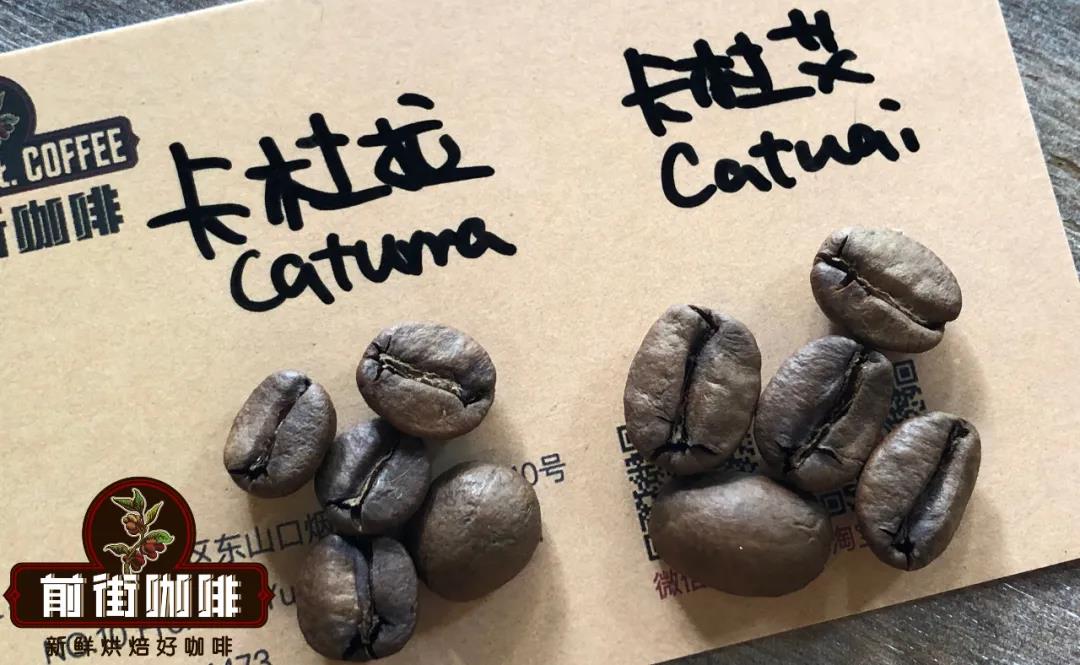
He put coffee cherries into sealed fermentation barrels and fermented them at low temperature to lengthen the whole fermentation time. With 15-20 days of fermentation, the flavor of coffee has more possibilities. Under the incubation of time, slow drying can make coffee cherries develop the best water activity in this process, so that the flavor development is good. Secondly, the green beans can also be maintained for a longer time in the storage cycle of the season. After fermentation, these coffee fruits are dried in the sun. And this treatment, which Front Street now calls anaerobic solarization.
Front Street Coffee Colombia Rose Valley Coffee Bean
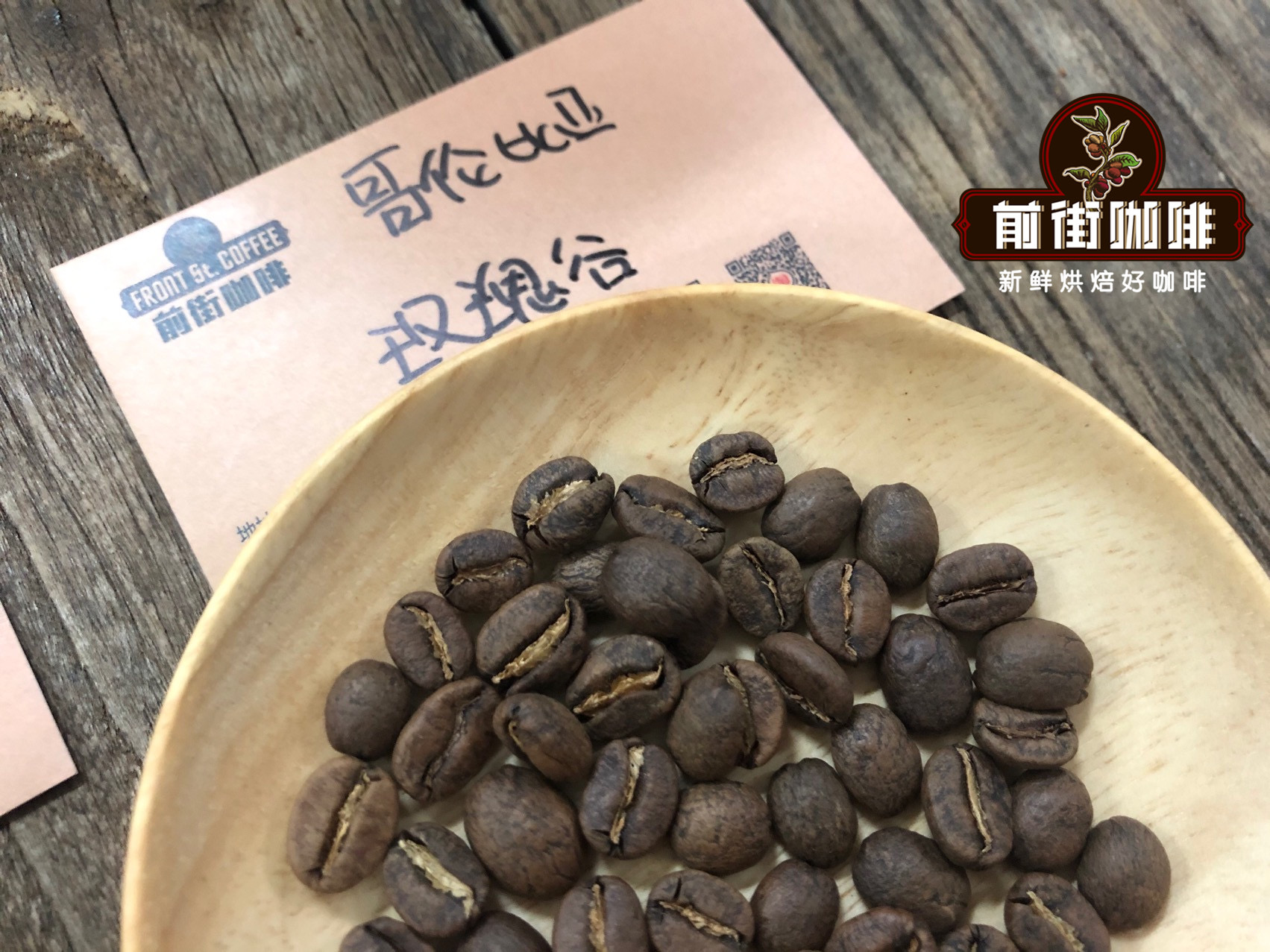
Country: Colombia
Producing area: Tande (Dashu Manor)
Altitude: 1700m
Variety: Kaddura
Treatment method: anaerobic double enzyme washing treatment
Flavor: honey, juicy, strawberry
Rose Valley Coffee comes from the Dashu Manor in Santander, Colombia. Farmer Vargas has been growing coffee on the Dashu Farm for 20 years. In the Dashu Farm, only the fully ripe coffee fruits with bright red appearance are picked, and the defective floating beans are removed by washing, twice anaerobic fermentation and fermentation in a special enzyme group. At the same time, the owner of the manor also pays great attention to the drying process of coffee beans, avoiding excessive temperature during drying and adopting a slow drying method. That is, the dual enzyme anaerobic treatment mentioned in the previous street.
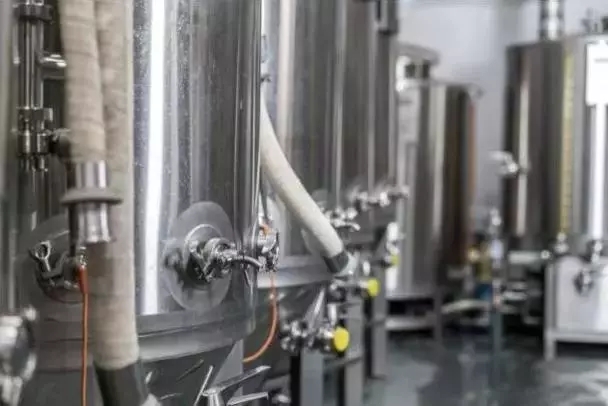
Its process is to remove floating beans by washing, and finally put the processed coffee beans into a closed container, inject carbon dioxide to exhaust oxygen, slow down the decomposition rate of sugar in coffee pectin in an oxygen-free environment, and PH decreases more slowly, prolonging fermentation time, so as to develop a better sweetness and more balanced flavor of coffee.
The above are the coffee beans arranged by Qianjie Coffee House, which can represent the three major coffee producing areas. I hope this article can help coffee fans to better understand the flavor of the relevant coffee producing areas, so as to select coffee beans that suit their own taste.
For more boutique coffee beans, please add private Qianjie coffee on Wechat. WeChat account: kaixinguoguo0925
Important Notice :
前街咖啡 FrontStreet Coffee has moved to new addredd:
FrontStreet Coffee Address: 315,Donghua East Road,GuangZhou
Tel:020 38364473
- Prev
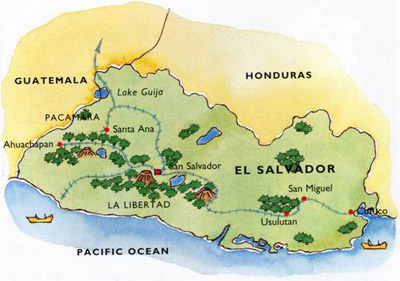
World Fine Coffee El Salvador Manor beans: El Salvador Coffee Cafe de El Salvador
Country profile Republic of El Salvador, Repblica de El Salvador in Spanish, the Republic of El Salvador in English. It is located in Central America, bordering Guatemala and Honduras in the north, and the Pacific coastline in the west and south. The smallest country in Central America and the most densely populated country in Central America. The land area is 21393 square meters
- Next
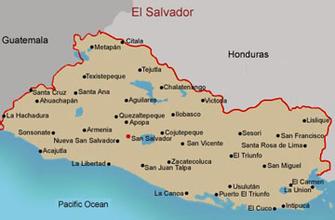
Introduction to the world's three major coffee producing areas: American coffee estates and detailed explanation of coffee from each producing area
Coffee production in the Americas refers to Central America and South America, and the areas north of Mexico are basically non-producing coffee beans. Coffee production in the Americas is mainly distributed in the Tropic of Cancer to the equator, and several countries in Central America are basically coffee producing countries. Brazil, located in South America, is the world's largest coffee producer. Just like the spread of coffee, it cannot be separated from the era of great navigation.
Related
- Does Rose Summer choose Blue, Green or Red? Detailed explanation of Rose Summer Coffee plots and Classification in Panamanian Jade Manor
- What is the difference between the origin, producing area, processing plant, cooperative and manor of coffee beans?
- How fine does the espresso powder fit? how to grind the espresso?
- Sca coffee roasting degree color card coffee roasting degree 8 roasting color values what do you mean?
- The practice of lattes: how to make lattes at home
- Introduction to Indonesian Fine Coffee beans-- Java Coffee producing area of Indonesian Arabica Coffee
- How much will the flavor of light and medium roasted rose summer be expressed? What baking level is rose summer suitable for?
- Introduction to the characteristics of washing, sun-drying or wet-planing coffee commonly used in Mantenin, Indonesia
- Price characteristics of Arabica Coffee Bean Starbucks introduction to Manning Coffee Bean Taste producing area Variety Manor
- What is the authentic Yega flavor? What are the flavor characteristics of the really excellent Yejasuffi coffee beans?

